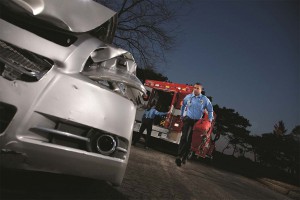After years of decline, there’s been a sudden surge in highway fatalities in the U.S. this year, and if the current trend continues, the U.S. could see the roadway death toll rise to its highest level since 2007, according to the National Safety Council.
The financial impact has also risen sharply this year, reports the NSC, climbing by 24% during the first half of this year when deaths, injuries and property damage are factored in.
“Follow the numbers: the trend we are seeing on our roadways is like a flashing red light – danger lies ahead,” said Deborah A.P. Hersman, president and CEO of the National Safety Council.
The NSC had previously sounded a warning, noting that traffic deaths had begun to rise late in 2014, a trend that carried over into the new year. Now, the non-profit organization reports, a total of nearly 19,000 people were kill in traffic crashes across the country during the first half of 2015, while more than 2.2 million were seriously injured. If that pace holds during the second half, it would result in the deadliest year on U.S. roadways since 2007.
(Hammered by biggest fine ever, Chrysler aims to fix broken safety system. Click Here for more.)
Exactly why the death toll has started to rise after years of generally steady decline is far from certain. The NSC believes two factors are having a particularly strong influence: lower gas prices and an improving economy.
“This generally means an increase in traffic; more people can afford to drive, and many travel longer distances and take vacations,” the organization said in a news release.
(Rental car recall safety act named for two Houck sisters passes Senate. Click Here for the latest.)
Other safety experts say the death toll would be even higher were it not for the addition of new, high-tech equipment, such as electronic stability control, on today’s vehicles. A crackdown on drinking and driving has also helped, as have laws that mandate seatbelt usage.
Even with the latest, upward trend, the U.S. highway death toll is down almost 40% from its peak four decades ago. That said, there is “no way our country should tolerate 32,917 people dying on our roadways,” Mark Rosekind, the new head of federal traffic safety enforcement declared during a visit to Detroit last month. That was the figure for 2013, the last year for which the National Highway Traffic Safety Administration has complete numbers.
A number of states have expanded efforts to get motorists to buckle up, while others are stepping up the drive to get drunks off the road. But NSC CEO Hersman said the best step is to “Be a defensive driver and make safe decisions behind the wheel. Your life really depends on it.”
Among the key recommendations:
Make sure every passenger buckles up on every trip;
Designate an alcohol and drug-free driver or arrange alternate transportation;
Get plenty of sleep and take regular breaks to avoid fatigue;
Never use a cell phone behind the wheel, even hands-free; or text while driving;
Stay engaged in teens’ driving habits. Teens are three times as likely to crash as more experienced drivers; and
Learn how to properly use your cars safety features.
(Victims fund blames GM ignition switch defect for 124 deaths in final tally. Click Herefor more.)


I’d bet distracted driving is the real reason for increase highway deaths.